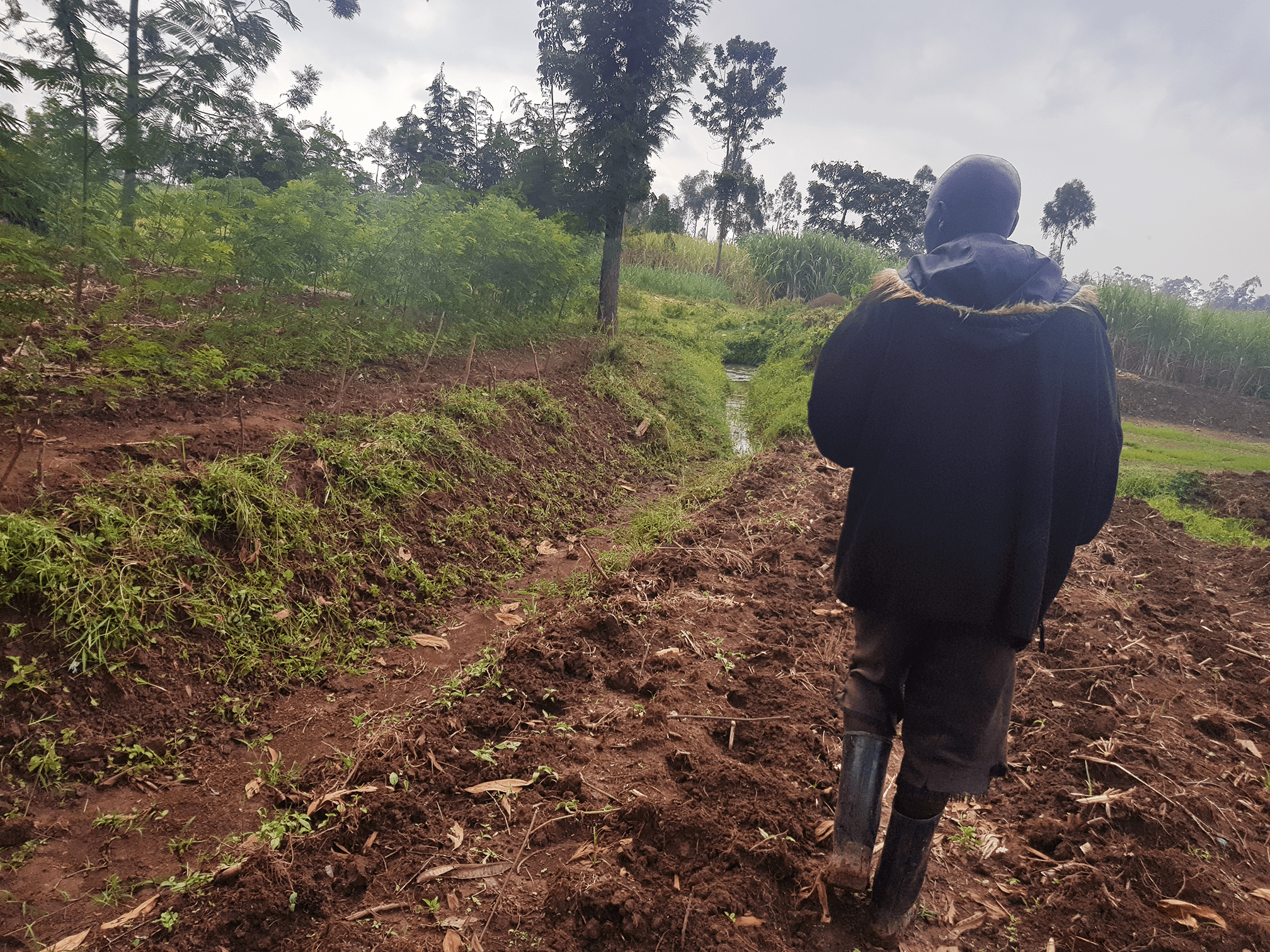In Rangwe subcounty in Homa Bay, Kenya, farmers are revolutionizing the way they grow food.
Phillip Ondira says his village had no idea what permagardening was until he and his neighbors signed up for Trees for the Future’s Forest Garden program in 2020. Phillip and his wife Rose Akinyi used to rely on monoculture practices. They grew three staple crops: maize, cassava and sorghum. This system of farming has a negative impact on the land and environment, and it leaves farmers like Phillip and Rose more vulnerable to unpredictable scenarios like extreme weather and pests.
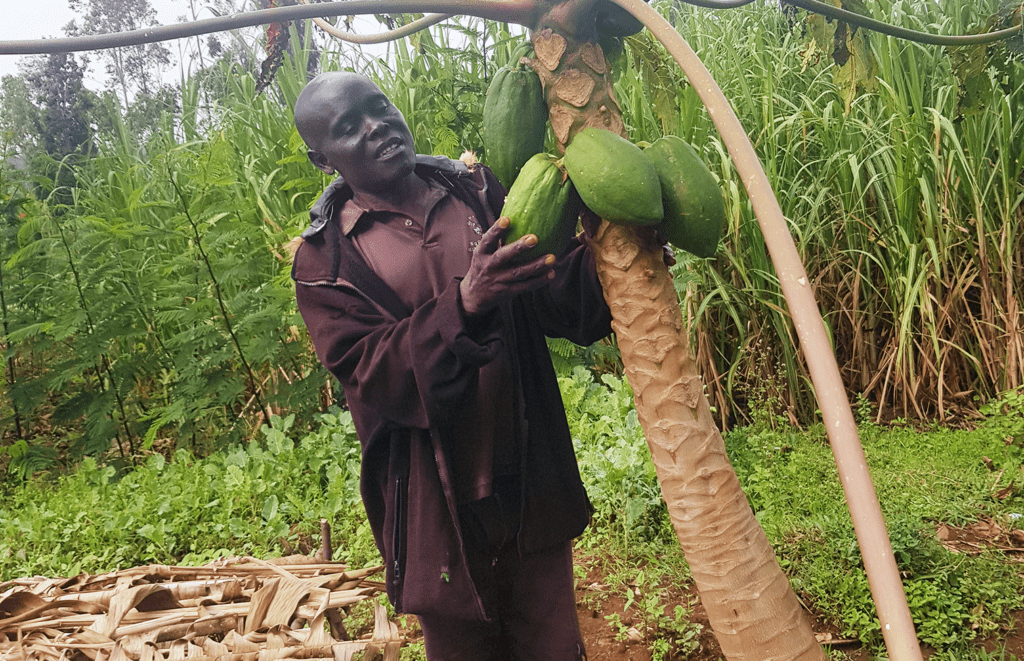
Their farming techniques changed when they started receiving Forest Garden training from Trees for the Future (TREES) staff. Local staff teach farmers to protect their land by planting thousands of agroforestry trees in a living fence around their Forest Garden. Farmers then diversify what they grow so that they have more to eat and sell throughout the year.
TREES staff train farmers in sustainable, cost-effective farming techniques too.
“To ensure maximum yield I use compost manure,” Phillip says. “Our teachers (technicians) from TREES have taken us through the process of making compost manure and other Forest Garden techniques like intercropping which has led to higher returns and ensured more efficient land use.”
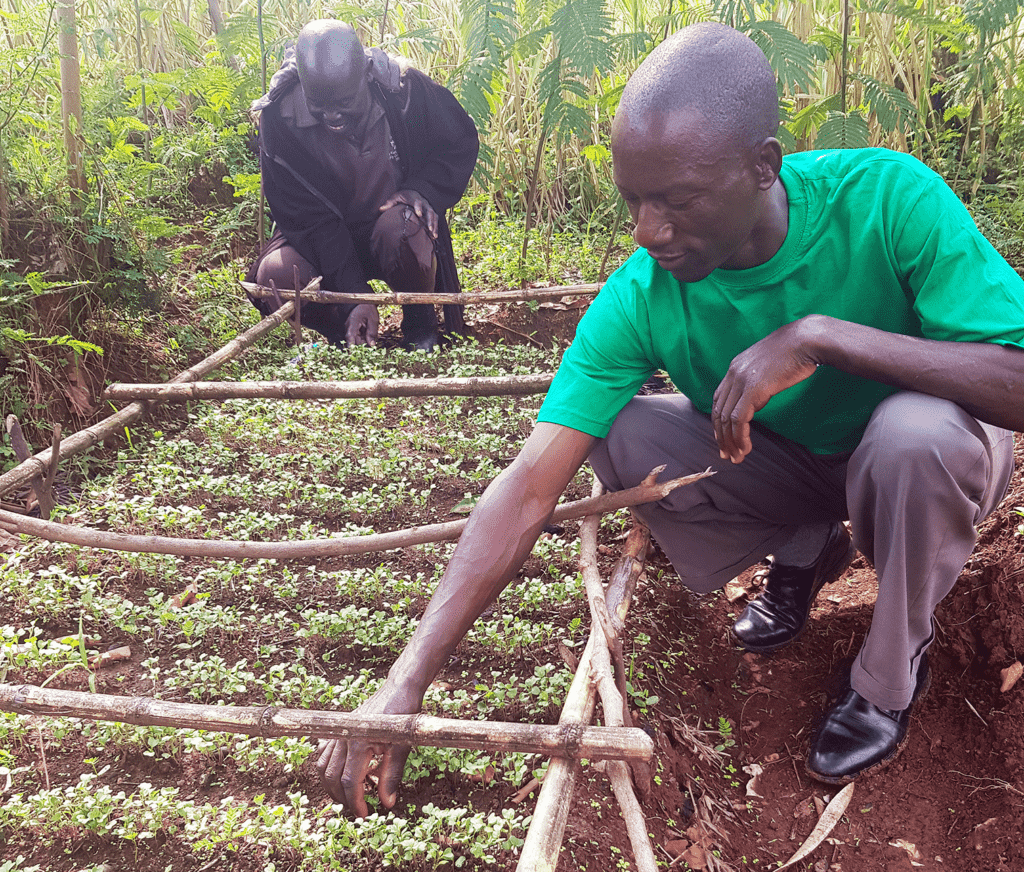
A few kilometers from Phillip and Rose’s home, Teresa Achieng and Consolata Juma are applying these same techniques to their Forest Gardens in Asumbi village.
The effects of an ongoing dry spell here are noticeable. Paired with the rising cost of living, farmers who rely on agriculture are feeling the strain. But Teresa and Consolata are no longer dependent on unpredictable weather patterns and just one or two crops. With training from TREES staff, the duo learned how to become food secure in a challenging environment.
“My fears have been transformed to hope,” Teresa says. “I am now making a profit. This is because I started diversifying my crops, and this has transformed my lifestyle since I harvest throughout the year.”
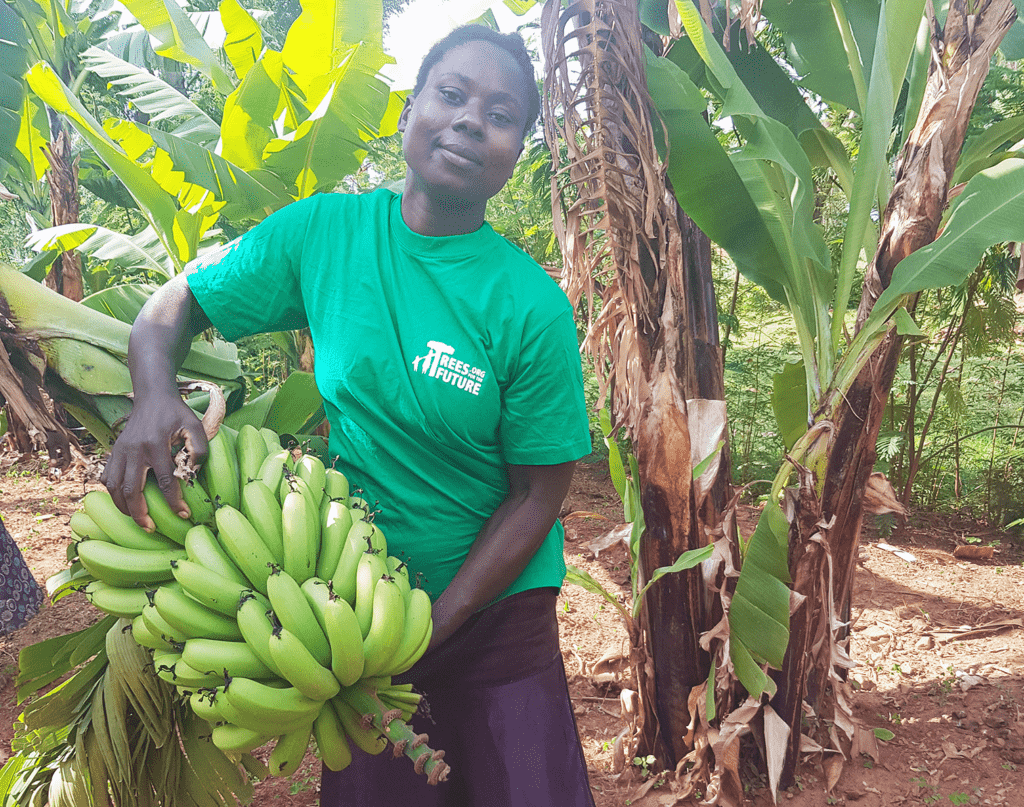
Diversification is key in the Forest Garden Approach. Farmers grow dozens of species of trees and food and resource crops. Back at Phillip and Rose’s Forest Garden, kale, spinach, eggplant, capsicum, amaranth, pumpkin, sweet potato, and a variety of herbs are growing. Fruit trees are also growing throughout the Forest Garden, offering avocado, passionfruit, and pawpaw, to name a few.
Rather than merely surviving from harvest to harvest, Forest Garden farmers are establishing viable agribusinesses. Consolata has more than 9,000 trees growing in her Forest Garden and over a dozen food and market crops.
“Since the establishment of our Forest Gardens, farming has enabled us as a group to fend for our families without straining,” Consolata says.
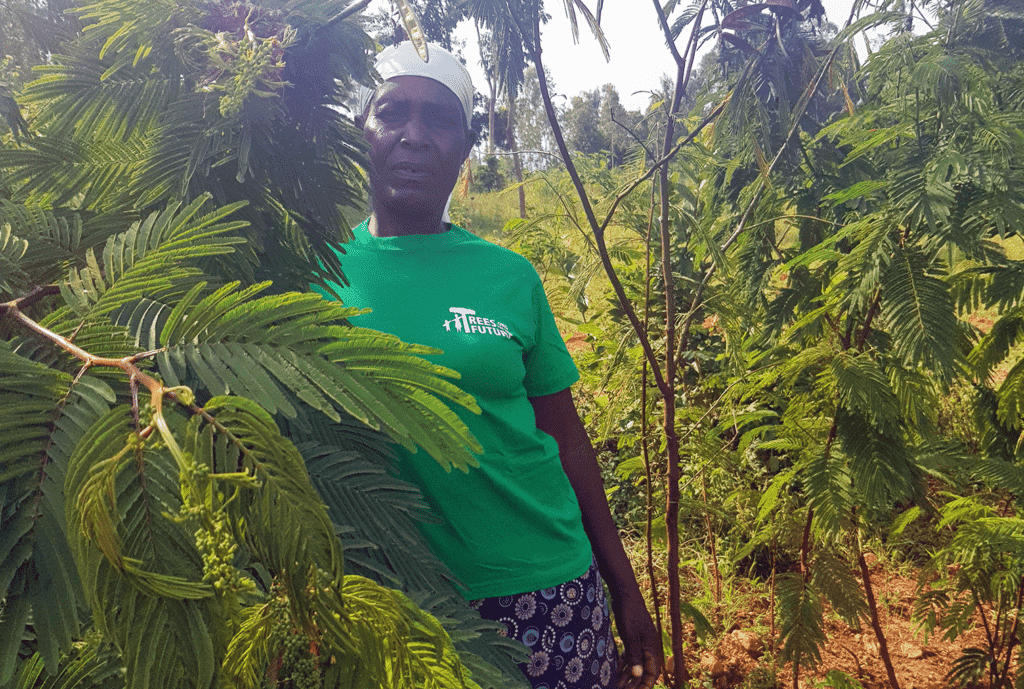
Teresa is already securing additional income thanks to her training. She’s selling fodder tree seeds to livestock farmers in the regions. And she’s able to pass on her agroforestry knowledge to others.
“Other farmers have seen the multiple benefits of the Calliandra and Leucaena trees,” she says. “They are nitrogen fixers, yielding fodder for livestock. It grows well in dry environments and can be dried and stored to [endure] the ravages of drought.”
And Phillip and Rose are adding to their Forest Garden. At the beginning of their training, farmers identify an acre or so of their land to transform into a Forest Garden. As time goes on, they often choose to add to it to increase the benefits.
“Due to the high demand of vegetables, I have kept on expanding my Forest Garden,” says Phillip.
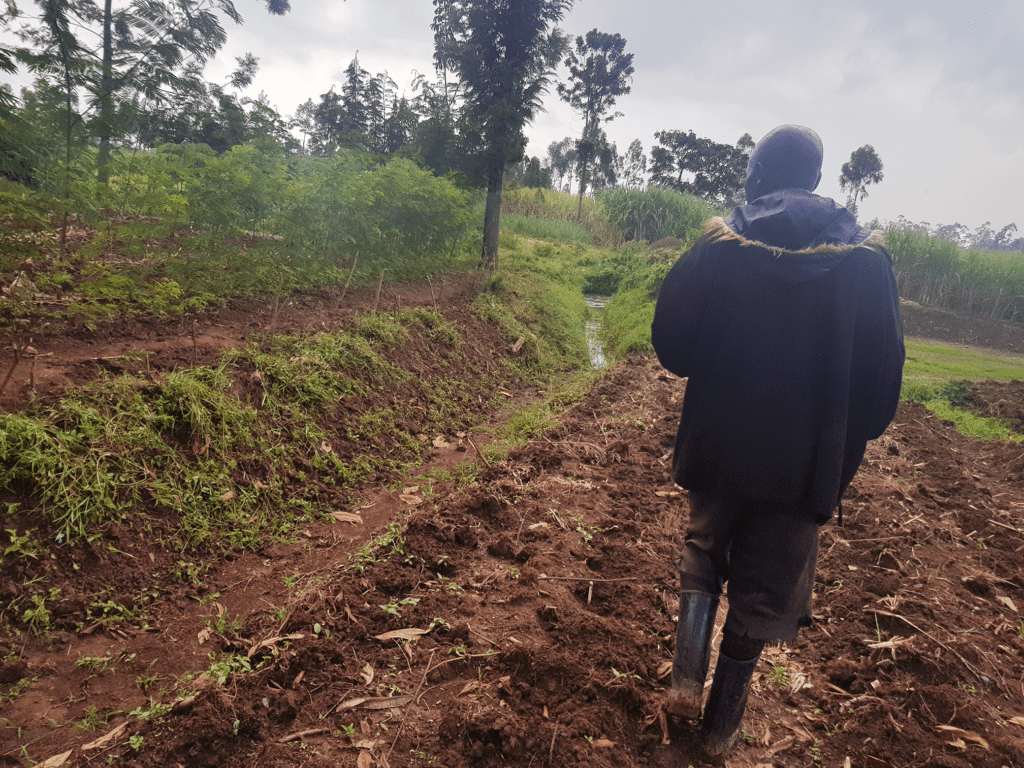
“We have improved our own diets and [have] cash income through the daily sales,” Rose shares.
Feeding and educating their four children used to be a regular challenge for Phillip and Rose. But with a thriving Forest Garden, those worries are a thing of the past.
Phillip and Rose have even constructed a fishpond in their garden so that they can start keeping fish for commercial use.
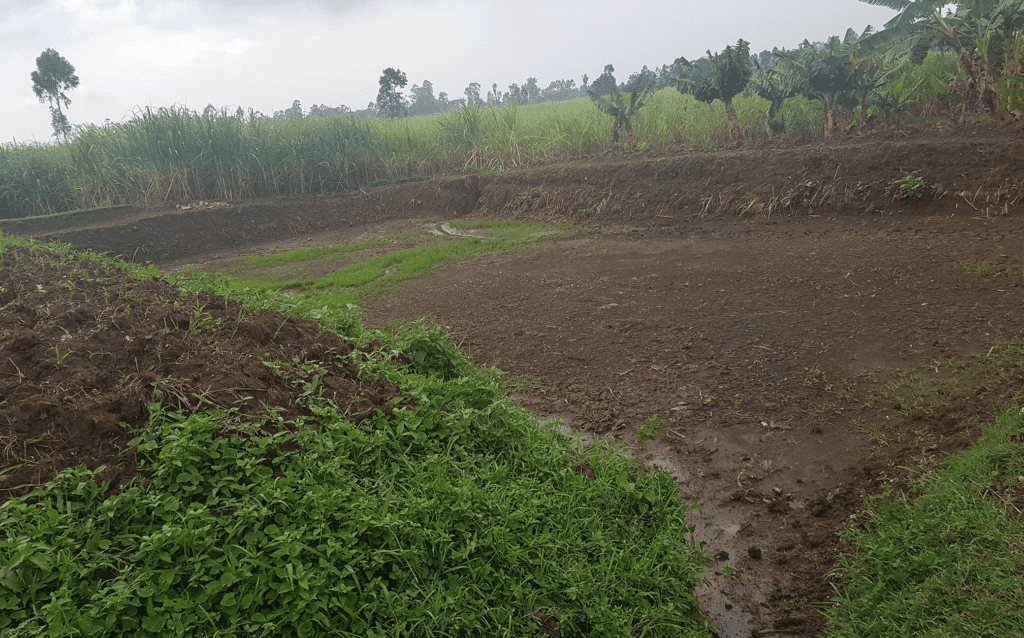
Serving more than 2,000 farming families in the greater Rangwe area, and over 11,000 across Kenya, TREES staff are helping farmers shape the future of agriculture and their food systems. Help staff reach more farmers in Kenya and across sub-Saharan Africa. Donate today.
